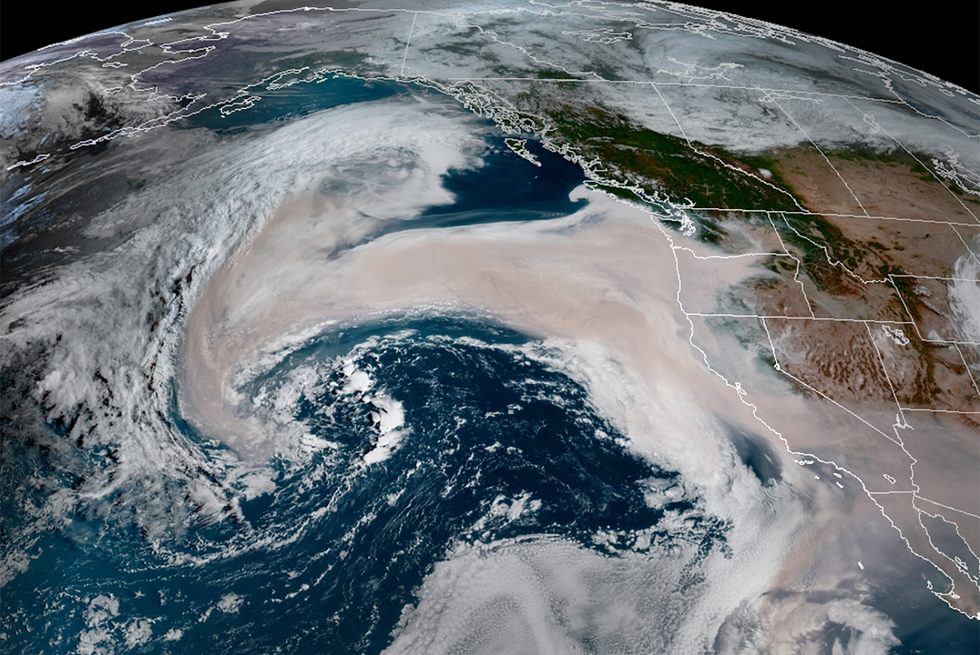
The earth is aflame. The now annual fires—in Brazil, Indonesia, Australia, the United States, and beyond—are the most visible way that forests are dying. Forests are also chopped down to make way for plantations, dug up as the earth is strip mined, and flooded by dams. Yet still, other forests thrive with and without human help. And from scorched earth new life grows.
A firestorm occurs when a fire grows strong enough that it is able to create its own winds, giving it increased intensity and size. Humans influence these winds, yet we don’t control them. The essays in this series show how synergies of power, economy, technology, and ecology create socio-ecological firestorms, remaking the more-than-human relations that can determine which forests live and die, and how. With contributions that interrogate the fate of forests on five continents, these essays show how seemingly disparate realms of the current global situation—such as climate change, Indigenous sovereignty, surveillance satellites, and the pandemic, to take only four of the topics considered in this Hot Spots series—are, in fact, inexorably linked through forests. Practices of forest care, Indigenous and otherwise, are needed as we move into a future that will not look like the past.
Posts in This Series

Introduction: Earth Aflame
We are now, once again, in the annual burning season across the forests of Amazonia, Indonesia, Australia, the United States’ West Coast, and beyond. All the fi... More

Wildfires and Ghosts: Pathogen Epidemics and Agricultural Abandonment in Italy
In Italy, as across the Mediterranean, wildfires have become larger, more intense, and more dangerous. In Portugal in 2017 and in Greece in 2018, homes burned a... More

Fire, Property, and Anti-Indigenous Policies in Brazil
It is fire’s capacity for creative destruction that lets a cynic have it both ways. On September 22, 2020, in a prerecorded address to the United Nations Gener... More

A Tale of Ruination: Amazon Forest Peoples and the Deadly Synergistic Effects of the Pandemic
“Land Grabbers, Loggers, and Prospectors Make No Home Office” —Greenpeace Amazon campaign op-ed headline, March 31, 2020The 1988 Brazilian Constitution estab... More

From Environmental Licensing to the License of Spirits
Translated from Portuguese by Ruan Magalhaes Rodrigues, Ana Furtado, and Maron Greenleaf with assistance from Henyo Barretto Many Apurinã,1 including my father ... More

Forest Urbanism: Urban Forest Life and Rural Forest Death in the Brazilian Amazon
The first time I visited the Amazonian state of Acre, Brazil, in 2012, I landed at the airport in the capital city of Rio Branco at night. Walking the tarmac in... More

How Oil Palm Plantations Deforested the Tesso Nilo Forests
Environmental issues such as deforestation in late modern society must be understood in relation to society and political economy. In the Indonesian province of... More

Firescapes, Smoke, and Woe
Orange flames. Yellow-brown smoke. Over the past two decades, fires have engulfed both Southeast Asia and the West Coast of the United States like never before.... More

Southeast Asia’s Smoldering Peat Fires amid Viral Pandemic
Forget carbon, forests’ new environmentalism is all about aerosols. Forests detoxify our air. At least, that’s the story those of us who grew up in the 1970s a... More

Living with Ashes
For many Australians, 2020 began as a year of fire. The bush fires that ripped through the country that year were unprecedented in scale and destruction. Dubbed... More

Remote Sensing as Biopower
Michel Foucault (1984, 262) refers to biopower as “numerous and diverse techniques for achieving the subjugation of bodies and the control of populations.” Be... More

Bound to Predict
The 2019–2020 “Black Summer” bushfire season that affected southeast Australia has, like the COVID-19 pandemic, been frequently framed in terms of its unprecede... More

The Goodfire Campaign: Swaying Opinions about Prescribed Burning
Burning “moves the forest towards a more natural and historic condition,” according to a May 2019 decision memo authorizing the new Blackrock and Little Green M... More

Ndee Hotspots: Ethics, Healing and Management
Indigenous fire management strategies often reach back to time immemorial. Within the context of the White Mountain Apache Tribe in east-central Arizona, oral t... More

Between Emptied Frontiers and Fungal Agroforests in the Brazilian Amazon
Frontiers in the Brazilian Amazon can be dull and even insipid places, ruins of ambitious development dreams. But that most dramatic and ancient land use techno... More

Friendly Fire: Gendered Practices of the Kayapó and the Taming of Fire
Amazonia has been shaped by human fire over the last fifteen thousand years, but by friendly fire rather than the feral fire that now rampages through the dry s... More

Burning through History in California’s “Asbestos” Forests
The Mountain View fire began on a cool, windy day in November. Like so many of California’s destructive fires of late, its proximate cause was wind-damaged elec... More

Catastrophic Fires, Colonialism, and the Revitalization of Indigenous Cultural Burning in California
California is currently facing a growing crisis of unremitting firestorms. The unprecedented inferno of smoke and flames highlighted on the nightly news over th... More